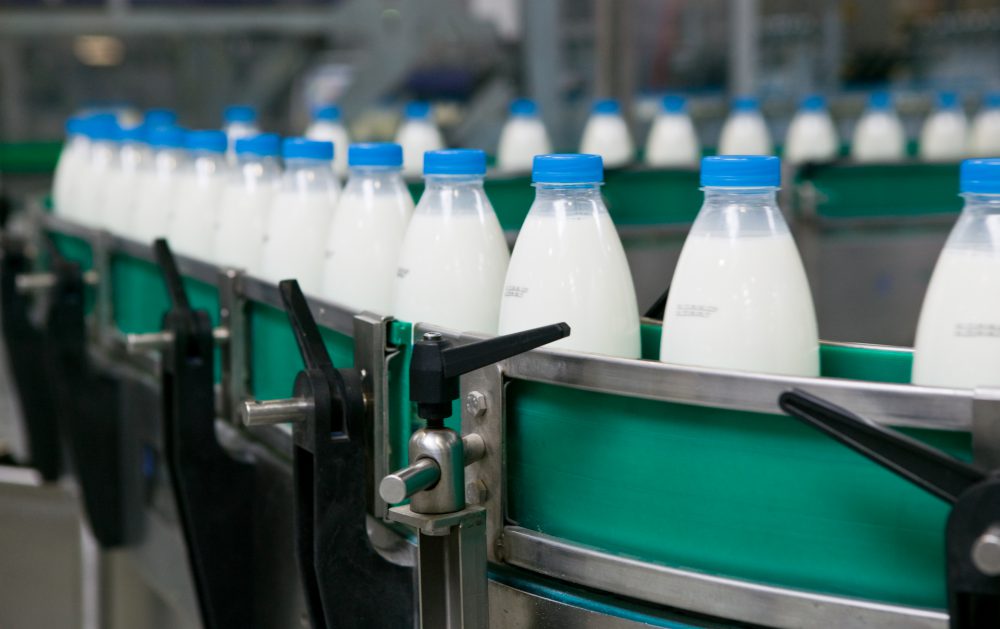Improper product flow can be detrimental to your food plant’s operations in more ways than one. These inefficiencies can cost money, waste time, jeopardize food quality and introduce safety hazards on the production floor.
In this post, we’ll explore the ways your facility may be at risk and what you can do to improve product flow.
How do I know if my food plant has a product flow problem?
If you have an issue with efficient product flow, you probably know about it already — and that may be why you’re reading this! Nevertheless, here are some common indicators that you may have a problem:
- Surplus inventory — If you have an unusual amount of raw ingredients in storage, that may be a sign that you’re not moving product along quickly enough.
- Excess work in progress (WIP) — A high volume of partially finished product sitting around is a common red flag that there are inefficiencies in your processing.
- Numbers aren’t adding up — If output is less than expected and/or if you’re having difficulty tracking product losses, you likely have interruptions in your process.
Oftentimes these symptoms go unnoticed in a facility, because they creep up gradually and become accepted as the norm. So why exactly should you care about your product flow?
4 ways inefficient product flow threatens your business
The ultimate goal is continuous product flow with minimal interruption from receiving and storage to packaging and distribution. The more breaks in the chain of your processing (i.e., the more times product is pulled off the line), the greater the risks.
Here are four major consequences of poor process flow:
- Increased risk of accidents and injuries — The more often employees have to physically transport product across your facility, whether by hand or with a forklift, the more often they’re at risk of being injured. Why do this more than you have to?
- Wasted time and money — Like any other inefficiency, less-than-optimal product flow creates a ripple effect that ultimately impacts your bottom line. Think about it: Every time product is handled and comes off the line, it has to be weighed and checked for quality control. When your process isn’t streamlined, throughput isn’t maximized, processing takes longer and revenue decreases.
- Greater opportunity for product damage and contamination — When you have to move product from one area of the facility to another, you introduce the possibility of contamination from foreign materials or allergens compared to a continuous, controlled environment. Handling the product manually or with a forklift also increases the chance of it getting damaged. Plus, when product gets stuck in between phases, there’s a greater risk of spoiling, especially for foods that require refrigeration.
- Less freedom to incorporate automation — Without a continuous flow where product moves seamlessly from start to finish, your processing is more complex than it has to be. The more complicated your process, the more opportunity for error and the more personnel required to manage it all. This unnecessary manual intervention and oversight restricts your ability to introduce more efficient robotics and automation into your facility.
The solution: Streamlining product flow with a facility assessment
A comprehensive facility assessment can identify the kinks in your chain as well as the low-hanging fruit where you can optimize your processing, such as:
- Space that isn’t being used efficiently
- Manual handling of product that can be eliminated
- Segments where automation can be incorporated
- Opportunities to link receiving, processing, packaging and shipping areas
Partnering with an experienced third party to conduct a facility assessment is ideal, because they bring a fresh, objective perspective to your campus. They aren’t jaded by “the way things have always been done” and they have experience identifying issues in a variety of food and beverage facilities.
In next week’s post, we’ll explore how to design efficient product flow into a new facility. In the meantime, check out our free guide on facility assessments and email me your questions at foodforthought@stellar.net




